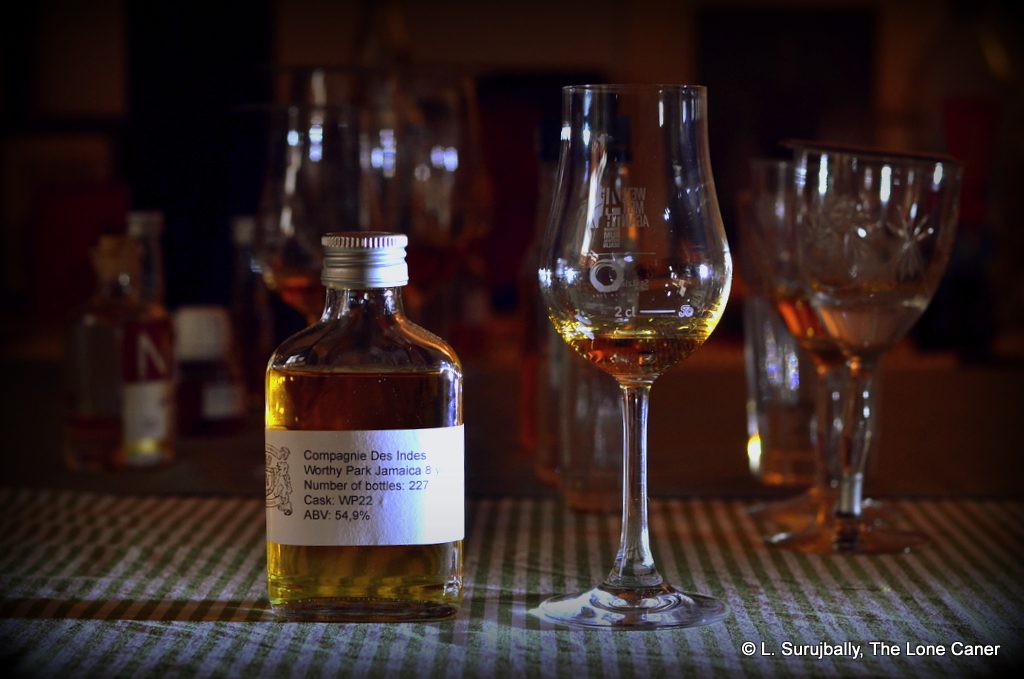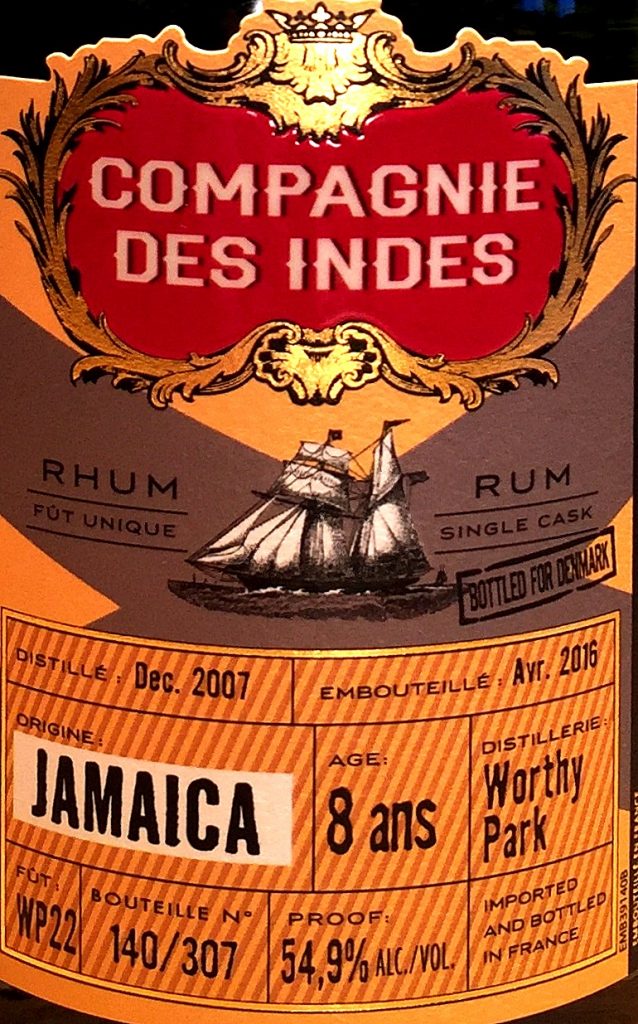
Hampden has been getting so much press of late that it’s only fair to have a look at the other products of the island, of which, these days, there are no shortages. For a long time these distilleries — with names geeks could recite in their sleep, like New Yarmouth, Innswood, Clarendon, Long Pond Monymusk, Worthy Park, Hampden — laboured in relative obscurity, living in J. Wray’s gargantuan shadow, selling mostly bulk rum abroad, or for the local market.
Somehow, though, the distilleries remained alive, and so did their names, their rums. While I’m by no means disparaging or downplaying the emergent reputations of these distilleries over the last half-decade or so as they began selling rums under their own brands, tropically aged and made in Jamaica (rather than just being a resource for others to tap), I think one of the reasons the layperson is even aware of them is because of the independent bottlers out of Europe, who for decades issued the occasional cask strength or watered down single-barrel release and kept the lesser-known marques of Jamaica alive. (And that goes especially for WP, which was shuttered from 1960 to 2007.)
Most of the time, such bottlers never bothered with identifying the distillery of origin. Often it was just “Jamaica rum” and that was it. But in line with the recent interest in stills and distilleries (which perhaps originated in the Age of Velier’s Demeraras), the independents became more forthcoming with where their juice originated on the island.
 This brings us to the Compagnie des Indes, founded in 2014 by Florent Beuchet, who, with the exception of their blends like the Dominador or Caraibes, has always placed rather more information than less on the labels of their rums – including that first set of cask strength bruisers marked “Denmark only”, which have caused nerds conniption fits and allowed the lucky Danes to preen unashamedly while glugging their personalized full proof juice. This one, distilled in 2007 (the first year of WP’s re-opening after being modernized) and bottled in 2016 at a solid 54.9%, was continentally aged and limited to 307 bottles, all of which ended up in Denmark.
This brings us to the Compagnie des Indes, founded in 2014 by Florent Beuchet, who, with the exception of their blends like the Dominador or Caraibes, has always placed rather more information than less on the labels of their rums – including that first set of cask strength bruisers marked “Denmark only”, which have caused nerds conniption fits and allowed the lucky Danes to preen unashamedly while glugging their personalized full proof juice. This one, distilled in 2007 (the first year of WP’s re-opening after being modernized) and bottled in 2016 at a solid 54.9%, was continentally aged and limited to 307 bottles, all of which ended up in Denmark.
Trying the rum in 2016, against its spectacular 7 year old brother (also from WP’s 2007 output) and again for this review, I was reminded how full proof Jamaican rums seem to step up their game and be ahead of living room strength rums by a country mile. It was lighter on the nose than the RN Supreme Lord 7 and Supreme Lord 8 which were also on the table that day; slightly funkier too, though restrained compared to the rutting jocks of the Hampdens or NRJ rums. Aromas of honey, dates, apricots, tart soursop and green grapes mixed it up nicely with some brine and olives, and a sly hint of flowers emerged after adding a few drops of water.
The palate was where it shone. It was warm, spicy and very clear, tasting immediately of brine, light nail polish remover, and also of lemon sherbet and mango ice cream. It presented firmly on the tongue, somewhat sharp without any jagged edges of confusing or conflicting tastes; as it opened it provided flavours of paint thinner, varnish and sweeter acetones, accompanied by light funk, vanilla, slightly bitter oaky tannins, which were in their turn superseded (but not eclipsed) by some caramel and brown sugar, dill and lemon zest. Really good balance, really well put together. It ended with a delightfully long and cruising finish, warm and solid, providing mostly tart background notes of half ripe mangoes, peaches, some caramel, and the vaguely bitter strength of some very strong black tea sweetened with condensed milk.
Worthy Park rums are interesting variations on the Jamaican style. Appletons are well made, elegant blends with a laid back sort of profile, while Hampdens are fiercely luxurious funk bombs, and Monymusk and New Yarmouth seem to exist on another plane of existence altogether (perhaps because they are relatively less well known). Worthy Park rums, though (those that I’ve tried, anyway) are light, crisp and clean, ester-rich, with delicate and precise lines of commingled flavour coiling through each and every one of them, only occasionally exploding into something more aggressive, and usually resting on a softer background that makes for a lovely sip.
Now, their own new tropically aged rums issued over the last few years are small masterworks (I think), yet we should not ignore the sterling efforts of the choices the independent bottlers made either, both before and during the current Jamaican Renaissance. This excellent rum is a good example of why that statement can be made, be absolutely true, and it burnishes and elevates the reputation of a distillery that is finally getting the respect it should have had long ago. I’ll be trying quite a few more of their rums in the months and years to come, that’s for sure.
(#588)(87/100)
Other Notes
- For further reading on Jamaican rum distilleries, a good starting point is The Wonk’s Jamaican Cheat Sheet.
- As far as I know the distillation apparatus is a Forsythe’s copper pot still